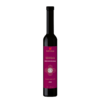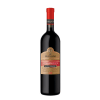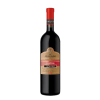Georgian wine Khvanchkara
Many people know about the wine KHVANCHKARA in connection with Stalin, they say, according to one version, it was the favorite wine of the “leader of the peoples.” In fact, the history of Khvanchkara is older and more interesting, and the wine itself deserves a thorough discussion.
Khvanchkara is a semi-sweet red wine from the Georgian region of Racha. It is made from grapes grown on the right bank of the Rioni River. There is a village called Khvanchkara here. In this area, winemaking originated in ancient times. But the legendary local wine, which glorified these lands, appeared only at the end of the 19th century. Princes Dmitry and Lebanon Kipiani began to make it. At first they produced in tiny batches, for themselves, but in 1907 they decided that it was time to bring their product out into the world. They took bottles of their wine to Belgium for a wine exhibition. And they were amazed that the European experts liked their drink. So much so that the authoritative jury awarded Khvanchkara a gold medal and gave in addition a special prize – the badge of the then King of Belgium Leopold II. After this incident, the wine of the princes Kipiani became popular in Georgia and abroad.
In those years, it was made from late-harvest Alexandrouli grapes. It is noteworthy that the name of this grape comes from the name of Alexander. One of the meanings of this name is protector. And the inhabitants of the Racha region, many years ago, believed that this variety protects them from hunger and poverty. They say, while grapes grow in these parts, local residents will always have work and food.
With the advent of Soviet power, the Kipiani winery was nationalized. In 1932, the local production was put on an industrial stream, and the wine itself from Kipianevsky was renamed into Khvanchkara, after the name of the area. At the same time, they added to the main variety, Aleksandrouli, one more – Mujuretuli. There is a version that the production of this wine was revived especially for Stalin. They say that in his early years he was hiding from the persecution of the royal power in the Racha region. There he met his first wife Kato Svanidze and became addicted to local wine. Rumor has it that this drink has always reminded the leader of meeting the love of his life. However, we do not know for sure whether it is really so.
But we know for certain that it was Khvanchkara who was served at the famous Yalta conference in 1945 after the end of World War II. And the same wine was poured at many other official state events during Stalin’s times. So we have every reason to believe that it was one of his favorite wines. But this drink was not available to ordinary Soviet people. It was supplied on special orders for the party elite, labeled as “wine No. 20”.
So, how is this wine made, and what makes it so special?
The first secret of Khvanchkara is the use of late harvest grapes. That is, the berries are harvested at the end of autumn, when they are already as ripe as possible, and even slightly touched by the first frost. Considering the climate of Racha, this happens often here – the nights in autumn are cold, often with frost. At the same time, the grapes are gaining a maximum of sugar, and then, under the influence of frost, processes take place in it that make it even sweeter. The sugar content of the berries used for the production of Khvanchkara must be at least 22%. Then they are crushed, the ridges are separated and the juice is fermented along with the crushed peels and pulp – that is, with the pulp. And then the most interesting thing begins – the production of wine using the technology called Racha-Lechkhum. Fermentation takes place in qvevri, traditional Georgian earthenware vessels – as in the case of Kindzmarauli. These containers are buried in the ground up to the very neck, which is covered with wax. Since the nights in this region are quite cold, fermentation takes place at low temperatures and slowly, and in winter it stops altogether.
As a result, the yeast does not have time to eat all the sugar, and quite a lot of it remains in the ready-made wine. That is why Khvanchkara is semi-sweet, and this sweetness in it is completely natural, without any effort on the part of the winemaker. When fermentation is complete, the wine is poured into stainless steel containers and stored at zero temperature. It is then bottled and bottled to stabilize the beverage. In the post-Soviet space, Khvanchkara is a fairly popular product, partly because of its mental connection with Stalin. And for this reason, it is very much and is actively forged. In shops you can find many wines labeled Khvanchkara, which have nothing to do with the original wine. Georgia began to protect its product from counterfeiting relatively recently by historical standards. First, in 2010, their government issued the Law on Controlled Regions of Origin of Wines, which included the village of Khvanchkara in the list of Georgian appellations. That is, he defended the wine by geographical name, forbidding the use of this name for wines made outside the region. Then, in 2012, the Georgian government issued another law that officially protected Khvanchkara wine as a brand. Despite all this, there are still quite a few fakes on the market. Therefore, before buying Khvanchkara, you must first try to find it. The fact is that the wine-making zone where this wine is produced is small, the production volumes there are small. And how can you protect yourself from buying a miserable imitation? The surest way is to read the label carefully. First, it must indicate the geographical origin. Namely: the village of Khvanchkara, Racha region, Georgia. Secondly, look at the varietal composition – it should be Aleksandrouli and Mujuretuli. And finally, the fortress of Khvanchkara should be in the range of 10.5-12%. The real Khvanchkara may or may not like it, but it will definitely not leave anyone indifferent. This wine shimmers in a glass with an intense ruby color with purple hues. In his aroma, berries are the first to come into play: strawberries, raspberries, red currants, mountain ash and blackberries. Further, there are notes of roasted almonds, dried fruits, caramel, pomegranate, mountain violet and red rose. Its taste is velvety and deep, with distinct berry notes and a pleasant, unobtrusive sweetness. The aftertaste is tart and long.
What to drink Khvanchkara with?
Like any Georgian wine, with Georgian cuisine. But here it is important to understand that this wine is quite sweet. Therefore, it does not suit every dish. Of the win-win combinations, we can name, perhaps, young soft cheeses and creamy creamy desserts. You can also drink this wine solo, as a digestif – that is, after a meal.
Have you tried the real Khvanchkara, or is there any doubt that it was real?




